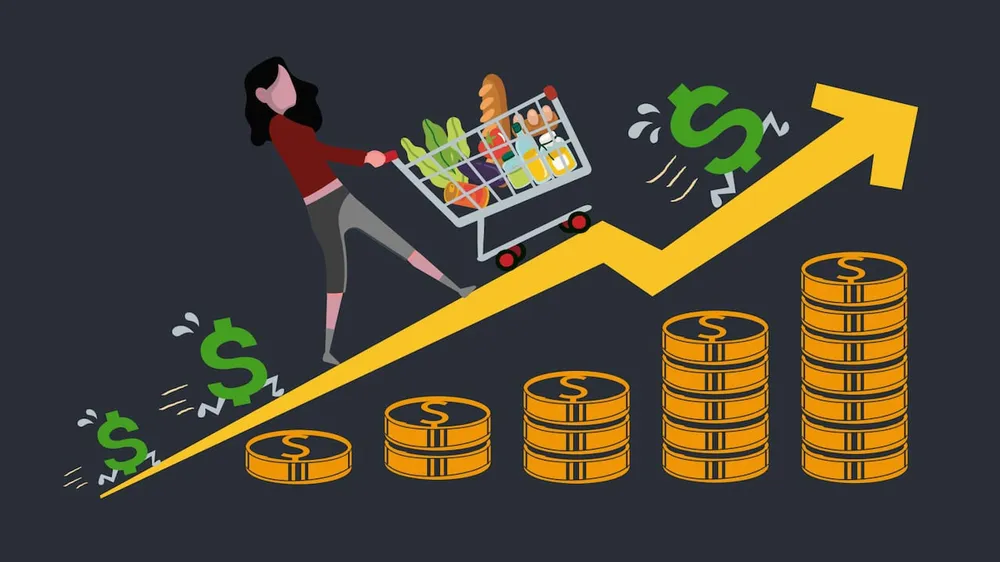
Inflation may persist
The main reason for this consensus is the fear that if high inflation continues persistently for a long period of time, it will affect inflation expectations within the economy. High inflation attached to the economy will then force Central Banks to take even more stringent measures to pull prices back to achieve their long-term target. Such strict measures can consequently have a very bad impact on the economic growth. The main task of Western Central Banks will then be to continue raising interest rates in the next few months of this year.
This complex situation has arisen at a time when wages in the European Union have increased by 4% and may still increase further because many strikes are occurring across Europe and will continue to take place with rising unrest among workers. Even high-income earners like lawyers, investment bankers, and tech company workers are now speaking out against rising inflation and high costs of living. It is clear to all now that inflationary pressures that are pushing wages up are real and happening. If this situation is prolonged any further, the price-wage crisis situation will spiral beyond control and will create a persistent prolonged wave of inflation.
There is also a different viewpoint amongst some who think that the risk of an economic recession will soon cause inflation to reverse, and Central Banks that are raising interest rates strongly like the US and U.K. will then have to return to lowering interest rates and pump money back by 2023. One such representative holding this view is Mr. Michael Burry, who is famously known for his Big Short for buying CDS contracts for secondary loans in advance before the 2008 crisis hit globally.
In the current situation timing is a serious issue. First of all, there is need to understand that if economies do fall into recession will it be by late 2022 or early 2023 or by the middle of 2023. Even expert analysts are uncertain of this timing. There is even a possibility that the major economies will avoid a recession which by definition means two consecutive quarters of negative real GDP growth. However, whether economic growth slows or shows both quarters with negative GDP, there is no guarantee that Central Banks will return to lowering interest rates. They may simply not raise interest rates anymore and call for increased public spending to stimulate the economy.
Implications for financial markets
Mr. Mohamed El-Erian, a leading economist and President of Queens' College at the University of Cambridge, and chief economic adviser to the Allianz Group, made a strong assessment that the Federal Reserve (FED) is making a mistake with monetary policy, which is slow to raise interest rates and misjudging inflation since the beginning of last year. So far, he has been right in his assessment. In an article in the Financial Times that came out in late June, he commented that the market faces a risk because the FED is wrong and quite far behind inflation. He also believes that the FED may make another mistake of going all out to fight inflation and create the risk of a hard landing.
According to Mr. Mohamed El-Erian, financial markets have reason to fear recession risks. Because although the US job market is still very good, the data on consumer sentiment is quite the opposite and businesses have reason to fear that the situation will deteriorate in the second half of 2022. Somehow, financial markets are afraid the FED will make another mistake and push the US into a recession, hence there is selling off of high-risk assets like stocks and cryptocurrencies.
Another risk to the market as Western Central Banks stays on the path of monetary tightening, is default risk. Mr. Nouriel Roubini, who often makes pessimistic forecasts about the market, has predicted that there could be a stagflationary debt crisis. With total global public and private debt currently at 350% of GDP, up from 200% in 1999, slower economic growth and faster interest rate hikes will push many zombie firms, households, and governments with a large debt towards default. Mr. Roubini drew a rather pessimistic scenario, comparing that in the 1970s we had a recession, but no crisis, because the debt level was low. After 2008, we had a debt crisis, but there was no stagnation because of low inflation. Now we have both.
In this respect, the writer somewhat disagrees. Indeed, we have high inflation and low growth right now, but the risk of large-scale default is not as high now as it was in the past because banks are well protected by capital adequacy regulations. In fact, the profits of American banks are all good and have passed the stress test and are paying out billions of dollars in dividends. Home market lending methods are also much safer than in the past, so the risk of default and collapse of the real estate market is also very low.
What the writer agrees with Mr. Roubini is that businesses with high debt can default and this risk is very high in Europe and the US, especially with high-yield bonds. However, that amount of bonds still accounts for a small proportion compared to the entire bond market, and the risk of default creating illiquidity of the whole market as in the period 2007 to 2008 is low when the current market has more intervention tools than it had in the past.
Nonetheless, although interest rates will continue to increase, they will not be as fast as in the first six months of the year. The market will soon realize that the new interest rate level is not the decisive factor, and even though money may no longer be cheap it will not be too expensive either.




















